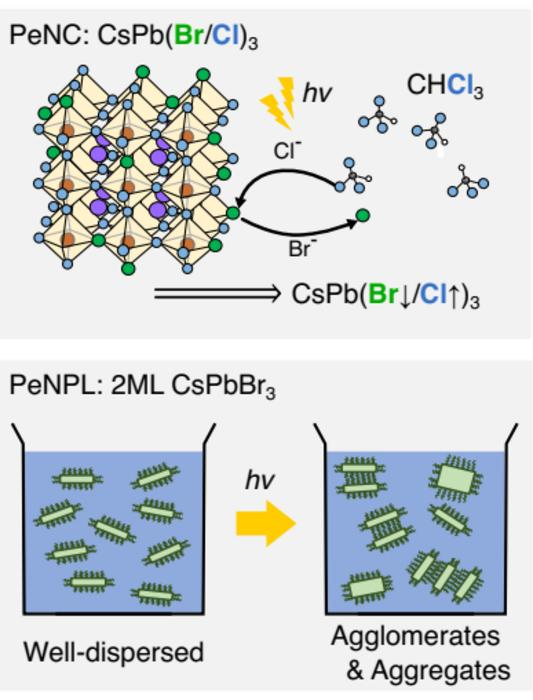
A team at the Institute for Basic Science (IBS) Center for Molecular Spectroscopy and Dynamics (CMSD) has developed a new spectroscopic technique to monitor changes in perovskite nanomaterials in real time under light exposure. The research was led by Professor Tai Hyun Yoon from the Department of Physics and Director Minhaeng Cho, Professor of Chemistry, both at Korea University.
The method, called asynchronous and interferometric transient absorption spectroscopy (AI-TA), enables rapid observation of structural changes and excited-state dynamics in light-responsive materials. It addresses key limitations of conventional ultrafast spectroscopy, which can damage light-sensitive samples and often requires long data collection times.
We can now simultaneously observe not just how a material reacts to light but also how it transforms during the reaction itself. This makes AI-TA a powerful tool for real-time analysis of complex nanoscale processes.
Minhaeng Cho, Director, IBS Center for Molecular Spectroscopy and Dynamics (CMSD)
Perovskite materials are considered promising for future optoelectronic devices, such as LEDs and solar cells. Their carrier dynamics can be studied using conventional femtosecond (10-15 seconds) laser-based techniques, which capture both chemical and physical properties.
However, these properties are highly sensitive to external factors like light, making it difficult to study how the materials behave in practical conditions. In particular, the laser pulses used in ultrafast spectroscopy can damage or alter the sample.
The IBS team addressed this challenge by reducing the measurement time using AI-TA. This method uses two precisely synchronized lasers to capture detailed spectral and temporal data on the material’s transient state. It allowed the researchers to observe processes such as charge carrier movement, changes in composition, and structural reorganization over timescales ranging from femtoseconds to several minutes.
AI-TA is evolving into a time-resolved spectroscopic technique that leverages the precision of optical frequency comb technology to investigate molecular reactions in the femtosecond regime.
Tai Hyun Yoon, Study Co-Corresponding Author and Professor, Korea University
The researchers applied AI-TA to two types of perovskite systems. In the first, they studied light-induced halide substitution in cesium lead halide nanocrystals. They found that increasing the chloride-to-bromide ratio led to higher bandgap energies and faster charge-carrier dynamics.
In the second, they examined light-driven changes and clustering in colloidal perovskite nanoplatelets. The results showed how energy loss in hot carriers varied with agglomeration and revealed a complex relationship between optical behavior and structural changes.
AI-TA offers a new way to study the dynamics of novel materials and various chemical substances that can be easily altered by light and other factors. This experiment marks the first step in showcasing the potential of AI-TA, and we look forward to expanding its applications in future research.
Dr. Gi Rim Han, Study First Author, IBS Center for Molecular Spectroscopy and Dynamics (CMSD)
This work improves the ability to track real-time changes in light-sensitive materials during laser measurements. Beyond perovskites, the AI-TA method may also support research in areas such as quantum materials, catalysis, and next-generation optoelectronic and photonic systems.
Journal Reference:
Han, G. R., et al. (2025). In situ and real-time ultrafast spectroscopy of photoinduced reactions in perovskite nanomaterials. Nature Communications. doi.org/10.1038/s41467-025-60313-3
Source:
